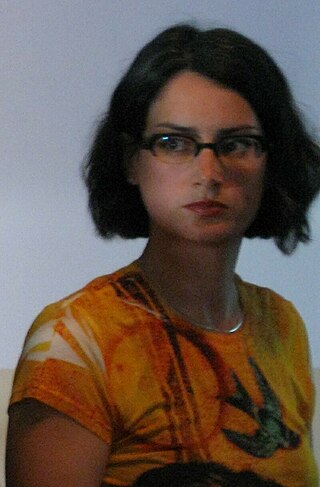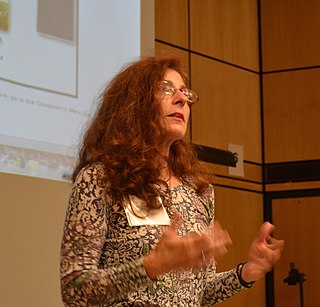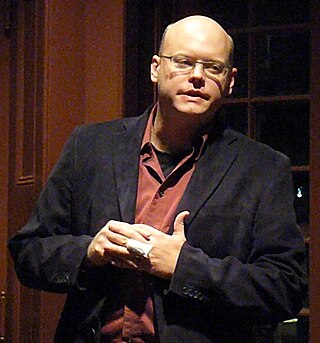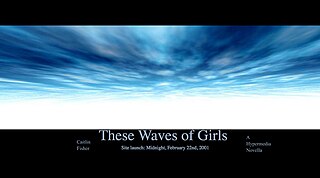Digital poetry is a form of electronic literature, displaying a wide range of approaches to poetry, with a prominent and crucial use of computers. Digital poetry can be available in form of CD-ROM, DVD, as installations in art galleries, in certain cases also recorded as digital video or films, as digital holograms, on the World Wide Web or Internet, and as mobile phone apps.
Electronic literature or digital literature is a genre of literature where digital capabilities such as interactivity, multimodality or algorithmic text generation are used aesthetically. Works of electronic literature are usually intended to be read on digital devices, such as computers, tablets, and mobile phones. They cannot be easily printed, or cannot be printed at all, because elements crucial to the work cannot be carried over onto a printed version.

afternoon, a story, spelled with a lowercase 'a', is a work of electronic literature written in 1987 by American author Michael Joyce. It was published by Eastgate Systems in 1990 and is known as one of the first works of hypertext fiction.
Stuart Moulthrop is an innovator of electronic literature and hypertext fiction, both as a theoretician and as a writer. He is author of the hypertext fiction works Victory Garden (1992), which was on the front-page of the New York Times Book Review in 1993, Reagan Library (1999), and Hegirascope (1995), amongst many others. Moulthrop is currently a Professor of Digital Humanities in the Department of English, at the University of Wisconsin–Milwaukee. He also became a founding board member of the Electronic Literature Organization in 1999.
Eastgate Systems is a publisher and software company headquartered in Watertown, Massachusetts, which publishes hypertext.
Judy Malloy is an American poet whose works embrace the intersection of hypernarrative, magic realism, and information art. Beginning with Uncle Roger in 1986, Malloy has composed works in both new media literature and hypertext fiction. She was an early creator of online interactive and collaborative fiction on The WELL and the website ArtsWire.
The Maryland Institute for Technology in the Humanities (MITH) is an international research center that works with humanities in the 21st century. A collaboration among the University of Maryland College of Arts and Humanities, Libraries, and Office of Information Technology, MITH cultivates research agendas clustered around digital tools, text mining and visualization, and the creation and preservation of electronic literature, digital games and virtual worlds.

J. R. Carpenter is a British-Canadian artist, writer, and researcher working across performance, print, and digital media. She was born in Nova Scotia in 1972. She lived in Montreal from 1990 to 2009. She emigrated to England in 2010, and became a British citizen in 2019. She now lives in Southampton, England.
Marjorie Coverley Luesebrink was an American writer, scholar, and teacher. Writing hypermedia fiction under the pen name M.D. Coverley, she is best known for her epic hypertext novels Califia (2000) and Egypt: The Book of Going Forth by Day (2006). A pioneer born-digital writer, she is part of the first generation of electronic literature authors that arose in the 1987–1997 period. She was a founding board member and past president of the Electronic Literature Organization and the first winner of the Electronic Literature Organization Career Achievement Award, which was named in her honor. Lusebrink was professor emeritus, School of Humanities and Languages at Irvine Valley College (IVC).

Dene (Rudyne)Grigar is a digital artist and scholar based in Vancouver, Washington. She was the President of the Electronic Literature Organization from 2013 to 2019. In 2016, Grigar received the International Digital Media and Arts Association's Lifetime Achievement Award.

Scott Rettberg is an American digital artist and scholar of electronic literature based in Bergen, Norway. He is the co-founder and served as the first executive director of the Electronic Literature Organization. He leads the Center for Digital Narrative, a Norwegian Centre of Research Excellence from 2023 to 2033.
Tina Escaja, also known as Alm@ Pérez, is a Spanish-American writer, activist, feminist scholar and digital artist based in Burlington, Vermont. She is a Distinguished Professor of Romance Languages and Gender & Women's Studies, and the Director of the Gender, Sexuality and Women's Studies Program at the University of Vermont. She is the winner of the International Poetry Prize Dulce María Loynaz, and the National Latino Poetry Award for Young Adults, Isabel Campoy-Alma Flor Ada. She is considered a pioneer in the field of electronic literature in Spanish. She is a full member of the North American Academy of the Spanish Language (ANLE), and Corresponding member of the Royal Spanish Academy (RAE).
Richard Holeton is an American writer and higher-education administrator. Holeton's creative works are foundational in the hypertext and electronic literature genres. As a writer, his most notable work is the hypertext novel Figurski at Findhorn on Acid, which has been recognized as an important early work of electronic literature and is included in the hypertext canon.

These Waves of Girls is a hypermedia novella by Caitlin Fisher that won the Electronic Literature Organization's Award for Fiction in 2001. The work is frequently taught in undergraduate literature courses and is referenced in the field of electronic literature as a significant example of early multimodal web-based hypertext fiction, placing Fisher "at the forefront of digital writing".
Lexia to Perplexia is a poetic work of electronic literature published on the web by Talan Memmott in 2000. The work won the trAce/Alt-X New Media Writing Award that year.
Of day, of night is an interactive digital story by Megan Heywardwhich uses hypertext and other digital elements to tell a meaningful narrative. It was first published in 2000 by the Australian Film Commission, and then published on CD-ROM by Eastgate Systems in 2002.
Storyland is a browser-based narrative work of electronic literature. The project is included in the first Electronic Literature Collection. It was created by Nanette Wylde in 2000 and is considered a form of Combinatory Narrative or Generative Poetry which is created with the use of the computer's random function.
Caitlin Fisher is a Canadian media artist, poet, writer, and Professor of Cinema and Media Arts at York University in Toronto where she also directs the Immersive Storytelling Lab and the Augmented Reality Lab. Fisher is also a Co-founder of York’s Future Cinema Lab, former Fulbright and Canada Research Chair and an international award-winning digital storyteller. Creator of some of the world’s first AR poetry and long-from VR narratives. Fisher is also known for the 2001 hypermedia novel These Waves of Girls, and for her work creating content and software for augmented reality.
The NEXT: Museum, Library, and Preservation Space is a repository of net art, electronic literature and games. It is supported by the Electronic Literature Lab, Washington State University at Vancouver and the Electronic Literature Organization. This is a digital museum dedicated to reviving and maintaining these works to make them accessible to all. Physical artifacts are held at the Electronic Literature Lab in Washington, US.






